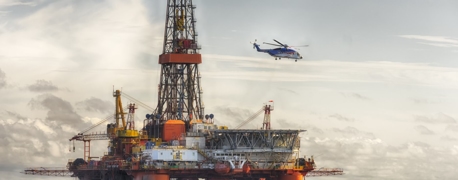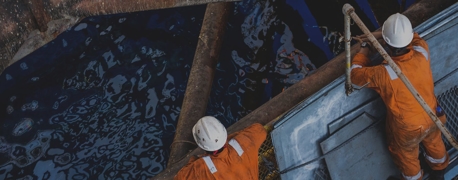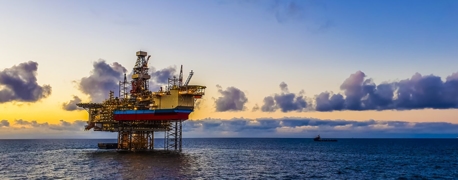Fishing Boat Accidents: Why & Where They Happen

Commercial fishing is consistently the most dangerous industry in the world. The fatality rate for U.S. fishermen is 203.6 per 100,000 workers, which is 50 times the mortality rate of the average worker. What drives a person to enter the most life-threatening career in the world? In many cases, the pay—fishing boats, particularly shellfishing boats, share earnings among the crew. A young crabber can pull in $4,000 a month during the season. College students embraced seasonal fishing work to offset the rising costs of tuition.
For others, fishing is the only line of work that'll take them. It's a physically demanding, potentially lucrative job, but it's also the job of last resort for some greenhorns. However, most commercial fishermen do it because they couldn't imagine doing anything else. It's one of the most exciting jobs out there, and it's an industry that could always use someone with quick hands and a strong back.
But what kinds of danger does a fisherman face?
#1: Colliding, Sinking or Capsizing
BLS figures found that over half of fishing worker fatalities were due to the entire vessel sinking or capsizing. The most profitable commercial fishing seasons are in the winter, when the sea is roughest, heightening the risk of sinking at sea. Additionally, climate change is making storms and hurricanes more intense in general, further increasing the risk of sinking for fishing boats. As a result, bad weather is a contributing factor for 1 in 6 fishing fatalities.
While making up less than 5% of fishing worker fatalities, fishing boat collisions are also a serious problem. Fishing boats can collide with shipping tankers (or their debris), oil tankers, and more. Oil rigs typically become poles of attraction for marine life, which draws together oil drilling and fishing to the detriment of fishing crews.
#2: Falls Overboard
A third of all fishing industry fatalities were caused by falls overboard. However, "falling overboard" is a fairly broad category in the fishing industry because there are numerous ways you can get sent over the railing. In a paper called "Fishing for a Living Is Dangerous Work" from the BLS, the author writes, "Going overboard as a consequence of slipping on a wet or icy deck, being pulled overboard when lines wrap around one’s legs, being washed overboard by a wave, pulled overboard by a hook, or flung overboard by a line suddenly tightening are examples of incidents which are classified as 'falls from ship or boat.'”
In a study of fishing fatalities, nearly half of falls overboard occurred because a worker was dragged overboard by nets or gear, with the remaining half split evenly between retrieving, checking, or repairing nets; setting or hauling gear; or repairing equipment.
#3: Drowning
About 84% of fishing industry fatalities are due to drowning, which corresponds to both falling overboard or vessel casualties (e.g. sinking or capsizing). However, it should be noted how high the sheer number of drownings is relative to other maritime careers. For instance, the total fatality rate for the shipping industry is 91% smaller than the fishing industry, so having a high drowning rate in the shipping industry is qualitatively different from the drowning rate for fishing.
#4: Hypothermia
Like we mentioned, fishing crew members face a high risk of being thrown or dragged overboard. While falling overboard is dangerous under any circumstance, it's especially dangerous in cold waters or during the winter (where and when shellfishing typically occurs). Without a lifejacket or a survival suit, fishers cannot last even 10 minutes in cold water. Hypothermia can set in half that time, eventually causing heart failure.
The Demographics of Fishing Fatalities
Fishing industry fatalities aren't evenly distributed across age, location, job, or fishing type. It's worth discussing who is most likely to get injured or killed while on a commercial fishing vessel, especially when 96% of all commercial fishing deaths occur at sea or on rivers.
Fishers in Alaska or Massachusetts
The highest fatality rates for commercial fishing workers is in Alaska and Massachusetts. Alaska has a smaller workforce than the rest of the United States, but it's still significant that 1 in 3 fatal occupational deaths is in fishing. Massachusetts has a lower fatality rate, but it is still the second-most dangerous state in the country for the fishing industry.
Fishing Workers Aged 25-34
A "disproportionately high share" of fishing fatalities happened to workers between 25 years old and 34 years old. Interestingly, a proportionally lower share of the fatalities occurred to people aged 55 to 64. There are industry reasons for this that we discuss below.
Wage & Salary Workers
Just about half of all commercial fishermen are self-employed, but represent only 40% of fishing fatalities. The bulk of fishing deaths happened to wage and salary workers, which is consistent with who is most likely to be working on deck, handling bait, checking traps or nets, and other duties associated with getting pulled overboard. This also corresponds to the age of most fatalities, as young men are less likely to own their own vessels or fishing businesses, whereas people in their 50s or 60s who are in the industry are less likely to be wage workers.
Crew Members (as Opposed to Vessel Officers)
From 1992 to 1996, crew members died 3x as often as captains or other vessel officers. This again aligns with age demographics—young workers are more likely to be the lowest-ranked, which means their duties typically include dangerous work on deck. Meanwhile, vessel officers are further along in their career and are thus likely older.
Shellfish Workers
The shellfishing industry accounts for nearly half of all commercial fishing fatalities, with 30% more deaths than the finfishing industry. Finfishing is safer despite the fact that finfishing yields weigh far more than shellfish catches (i.e., finfishing occurs more often). The cause for this, at least in part, is that shellfishing season mostly takes place during the winter, when the seas are rougher.
Despite all its dangers, a high fatality rate for the fishing industry is not inevitable. Like every industry, fishing can be made safer through improved policies, practices, and equipment. It's every company's duty, especially the largest ones, to make those improvements. When they fail in those responsibilities, it's up to to injury lawyers and injured workers to compel them.


